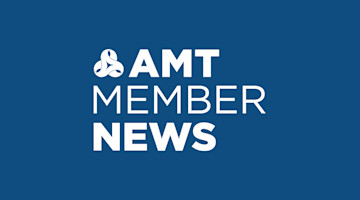Manufacturing companies, no matter the size, niche in the industry, or region of the United States, have been struggling for years to recruit, hire, and retain skilled workers who can keep pace with the technologies their companies must turn to as a means of remaining competitive.
To compound the issue, older workers in the baby boomer generation have begun retiring at an even faster pace, taking their legacy knowledge with them as they leave the industry. As a result, it’s vitally important now more than ever that companies establish closer, stronger partnerships with their local, regional, and state-based secondary and post-secondary education institutions, along with their regional education and workforce development organizations, so that we can properly educate the next generation of manufacturing technology workers.
It’s time that the industry advisory council model between companies and schools begins the work to make advancements in how the two communities partner together. Recently, the National Convergence Technology Centerdeveloped a new Business and Industry Leadership Team (BILT) model for the IT industry through a grant from the National Science Foundation. The BILT model is a more common-sense roadmap for our industry to follow as well.
Ask educators, administrators, and company executives why the connective tissue of an industry advisory council fades over time and you might find that there is a lack of dedicated time and effort, an inability to speak the same language, and a lack of funding to accomplish goals.
The BILT model calls for seven essential elements for success, including:
Single Disciplines: It’s important to keep the focus during BILT discussions. You are likely to find, for example, that discussing the role of a CNC operator and the role of a data visualization technician is not productive and will likely require a BILT for two different disciplines.
Frequent Meetings: At least four short meetings, once per quarter, to check in on job skills validation.
Trends Discussions: Focus on the trends you’re seeing in the industry that impact your shop, especially around technology advancements and the skills your workers need now and in preparation for the future of work.
Faculty Attendance: This is as critical as industry attendance.
Job Skills Validation: At least once per year, especially with emerging technologies, meet in-person or virtually to update the knowledge, skills, and abilities (KSAs) that are required of entry-level workers, looking ahead 12 to 36 months.
Faculty Crosswalks: Assure that the additional KSAs as agreed upon by the BILT are addressed in curriculum.
Providing Feedback: Communication runs in two directions.
To prepare yourself and your education partners for a change to the BILT model, please take the time to review the Smartforce Development recommendations in the recently updated AMT Manufacturing Mandate as a guide to your conversations.
For more information about Smartforce Development, please contact Greg Jones at gjones@AMTonline.org or Catherine Ross at cross@AMTonline.org.






